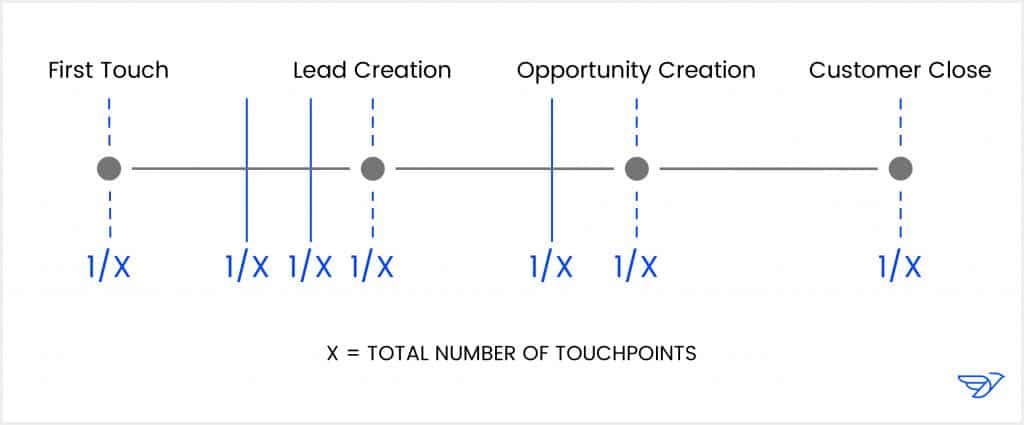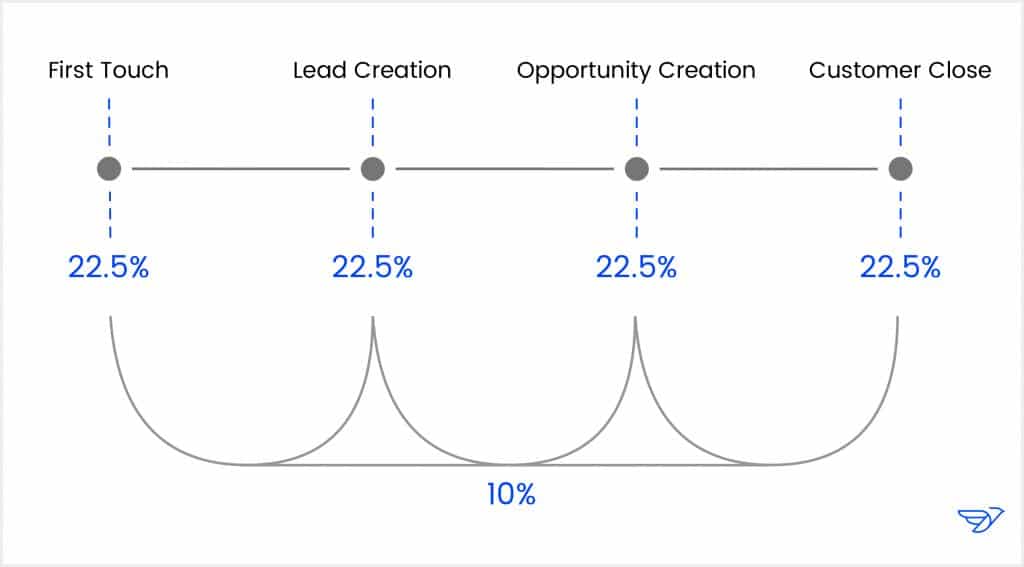Each year in the United States, businesses spend nearly $200 billion on digital marketing efforts, making the segment one of the most important industries in the country and ranking it among the most prominent expenses for American businesses.
With such vast sums being invested in marketing campaigns, it is more important than ever that companies squeeze as much value out of every marketing dollar that they spend. This is best accomplished through the use of a marketing attribution model, which is a means of quantifying how much each touchpoint in the customer journey is contributing to final conversions.
Marketing attribution is an indispensable part of digital advertising
With so many companies spending significant portions of their total costs on marketing, widespread industry estimates that less than a third of all companies are currently using marketing attribution may come as a major surprise.
The simple fact is that without some kind of attribution model, marketers are flying completely blind, having no way to even guesstimate with any precision what elements of a marketing campaign are leading to actual conversions, lead qualification or demand creation. And while anyone can use vanity metrics, such as social-media likes, shares or click-through rates, these primitive means of attribution have been shown to be unreliable at best and net costs at worst. One large study found that there was no correlation at all between click-through rates and conversions. It’s no wonder that 43 percent of marketing managers say that determining return on investment is their number-one challenge.
Some touchpoints are more significant than others
A naïve approach to creating a marketing attribution model may involve just looking at the last stop on the customer’s journey before a sale was made. This is a crude method that is rarely optimal for even the simplest businesses. But for companies with a longer sales cycle, it can be worse than useless.
Say, for example, that a sale of a software add-on was made directly after a customer clicked through on a nurture email. A marketer following a naïve approach might attribute the sale completely to the email in question. However, doing so can be radically misleading.
In this case, it is possible that the customer had already made the decision to purchase the add-on before the email, and receiving it simply acted as a convenient reminder, prompting them to click through and make the purchase. Also, if the marketer is not careful in how they’re defining their goals, they might conflate this existing customer, who is far advanced in the customer journey, with other qualified leads who may not have even purchased the underlying software for which the add-on is being sold. In each case, the attribution model that the marketer is using is likely to vastly overestimate the true value of nurture emails, potentially leading to extremely poor allocation of limited marketing resources.
Another scenario is businesses that spend a lot of their marketing budget on lead generation towards the top of the sales funnel. If a lead has been exposed to multiple advertising channels online and then they search for a business’ site through Google or type the URL directly into the address bar, a naïve approach may attribute the visit completely to organic search when, in fact, this is very clearly not an accurate assignation of real value in driving the customer to the site.
Some real-world multichannel attribution models
The fact is that companies who are using multiple marketing channels need some way of determining the relative worth of each one. This can only be done by using some form of rigorous attribution model.
There are many different forms of attribution models. However, the more granular they are, the more actionable information they tend to convey.
Which attribution model a marketer ultimately chooses to use will be a function of multiple variables, including their budget, skill and the sophistication of their marketing approach.
The first-touch attribution model

First-touch attribution models attribute 100 percent of the sale to the first point at which the customer entered the sales funnel.
If a customer clicked through a Facebook ad and then went on to interact 10 times with the company’s marketing materials, finally making a purchase after clicking through a nurture email, then the sale will be attributed completely to the original Facebook ad.
First-touch attribution models have the benefit of extreme simplicity, with anyone being able to easily set one up. However, they are mostly only appropriate for companies that tend to have very short customer journeys or situations where marketers are only interested in top-of-funnel benchmarks like creating as many qualified leads as possible.
While first-touch attribution is not appropriate as a single tool for most marketing applications, it can be useful in tweaking top-of-funnel marketing strategies even for firms with complex or longer customer journeys.
Last-touch attribution

Last-touch attribution is the inverse of first-touch attribution: It only takes into account the last touchpoint that a customer made prior to making a purchase.
Last-touch attribution is the model that is most popular with marketers, serving as the default attribution setting in Google Analytics. It tends to be more useful than first-touch attribution because it highlights the points in the sales funnel that lead directly to sales. However, it is still severely lacking in granularity, missing a lot of critical information about the customer’s journey.
That said, when it comes to optimizing a campaign for conversions rather than primary generation of demand, the last-touch method is quite effective. For marketers that may not have a lot of time and money to spend on attribution modeling, the last-touch model provides a lot of bang for the buck, yielding fairly powerful information while remaining as simple as possible.
Linear attribution

Linear or even-weighted attribution is the first step in moving towards more sophisticated attribution models.
Unlike single-touch models, linear attribution can take all touchpoints on the customer journey into account. This can give marketers a far more nuanced understanding of the dynamics at play within a marketing strategy, seeing the ways in which sales are created out of a long chain of events rather than viewing them as an isolated customer action.
A linear attribution model can therefore provide a far more realistic picture of the marketing process. And it is not much more difficult to set up or use than a single-touch model. However, the information that a linear attribution model provides is often still quite limited compared with more sophisticated approaches.
Because it is not possible to weight individual points along the customer journey, the linear attribution model is necessarily a crude abstraction of what is really going on. It can be much more useful to marketers that work with large or deep sales funnels. But it is still lacking relative to more nuanced approaches.
Weighted attribution models

For marketers that are really looking to gain useful insights into the dynamics of their marketing strategies, using some form of weighted attribution model is going to be a minimum requirement.
There are a number of variants on the weighted-attribution theme, including time-decay models, U-shaped models and W-shaped models. But what each has in common is that different touchpoints on the customer journey are assigned unique weightings. This can help marketers build a highly detailed picture of exactly what is working, what isn’t and the degree of magnitude to which each marketing channel is contributing to demand creation, lead qualification, and ultimate conversions.
The real benefit of weighted-contribution models is that they allow marketers to understand exactly what each channel is contributing. For example, some marketers have attempted to use Facebook advertising for final conversions to sales with lackluster results. But these marketers later discovered that Facebook was, in fact, an excellent means of generating leads, allowing these marketers to tweak their campaigns in a way that leverages the natural strengths of Facebook for this purpose.
The main drawback of weighted-attribution models is that they require real skill, knowledge and time to produce useful results. However, for marketers that are serious about maximizing returns on their advertising spends, this is the minimum approach that they should be taking.
Algorithmic attribution models
The clever reader may have guessed where the increasing sophistication of modeling described thus far is ultimately leading: Machine-learning-based approaches.
Also known as algorithmic attribution modeling, the use of machine-learning to optimize advertising spending is the current state of the art in attribution for digital marketing. Because of the vast quantities of highly accurate data that are generated within the modern marketing technology stack, digital marketing attribution is precisely the kind of problem that is most amenable to solving through machine learning and other advanced statistical and data-mining techniques.
The benefits of machine learning are fairly obvious: Sophisticated use of advanced statistical methods will yield the most powerful insights possible, giving any company that is able to muster such resources a massive edge over their less-informed competitors.
The chief drawback is that using such methods often requires advanced specialist skills and is best left to trained data scientists. Alternately, enterprise solutions like Google Analytics 360 can be employed. However, with six-figure price tags, such tools are mostly out of reach for smaller to midsize businesses.
Involve the experts
At Newbird, we believe in looking beyond just basic analytics. Gaining access to the data you need to build on strengths and filter out weak spots should include setting up a proper attribution model. Contact us today if you aren’t sure where to start or need a team of expert marketers to help take you to the next level!




